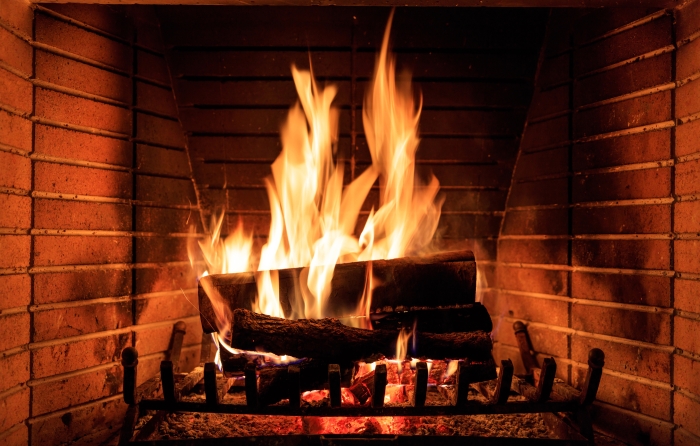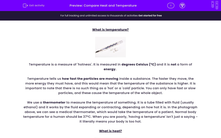What is temperature?

Temperature is a measure of 'hotness'. It is measured in degrees Celsius (ºC) and it is not a form of energy.
Temperature tells us how fast the particles are moving inside a substance. The faster they move, the more energy they must have, and this would mean that the temperature of the substance is higher. It is important to note that there is no such thing as a 'hot' or a 'cold' particle. You can only have fast or slow particles, and these cause the temperature of the whole object.
We use a thermometer to measure the temperature of something. It is a tube filled with fluid (usually ethanol) and it works by the fluid expanding or contracting, depending on how hot it is. In the photograph above, we can see a medical thermometer, which would take the temperature of a patient. Normal body temperature for a human should be 37ºC. When you are poorly, 'having a temperature' isn't just a saying - it literally means your body is too hot.
What is heat?

Heat is different to temperature because this is a form of energy and is measured in Joules.
It is more complicated than just measuring how fast the particles inside a substance are moving. Heat also depends on the mass of the object as well as its temperature. The total amount of energy that all of the particles have inside a substance is called its internal energy, and when this energy is transferred from a hot object to a cold object (or its surroundings), we refer to it as thermal energy (or heat energy).
It is harder to calculate the heat energy transferred by an object, compared to measuring its temperature. You would need measurements of temperature and mass, and you would also need to do some calculations using properties of the material you were testing, along with the power of the supply and the time taken to raise its temperature. The process of calculating energy transferred by heat is called calorimetry.
Let's try some questions on this. Don't worry if this seems a bit confusing, you can come back to this page by clicking on the red help button on the screen at any point.









